
10 Must Visit Museums in the Philippines
- National Museum of Fine Arts
- National Museum of Natural History
- National Museum of Anthropology
- Ayala Museum
- The University of Sto. Tomas Museum of Arts and Sciences
- Cebu Provincial Museum (Museo Sugbo)
- Davao Museum of History and Ethnography
- Pinto Art Museum
- Aguinaldo Shrine and Museum
- Palawan Special Battalion WW2 Memorial Museum
We all know that the Philippines is a tropical paradise with stunning beaches and a vibrant culture. However, what’s often overlooked in this archipelagic wonderland are its incredible museums.
I’m here to spill the beans on the absolute must-visit museums in the Philippines. So, buckle up, as we embark on a cultural adventure you won’t want to miss!
1. National Museum of Fine Arts
Address: Padre Burgos Ave, Ermita, Manila, 1000 Metro Manila
Website: https://www.nationalmuseum.gov.ph/
Contact Details: (02) 8527 1215
Operating Hours: Tuesday-Sunday: 9 AM–6 PM
Entry Fee: Free
The National Museum of Fine Arts is a real gem in the Philippines, a part of the National Museum. Here, you’ll find the iconic Spoliarium by Juan Luna, an internationally acclaimed masterpiece.
The building dates back to the 1920s when it was a legislative hall, so it’s this awesome mix of history and modern vibes. Inside, you’ll find the works of other Filipino art legends like Guillermo Tolentino and Félix Resurrección Hidalgo.
Pro tip:
- To enhance your cultural experience further, consider exploring the adjacent museums in the National Museum complex, like the National Museum of Anthropology and the National Museum of Natural History.
2. National Museum of Natural History
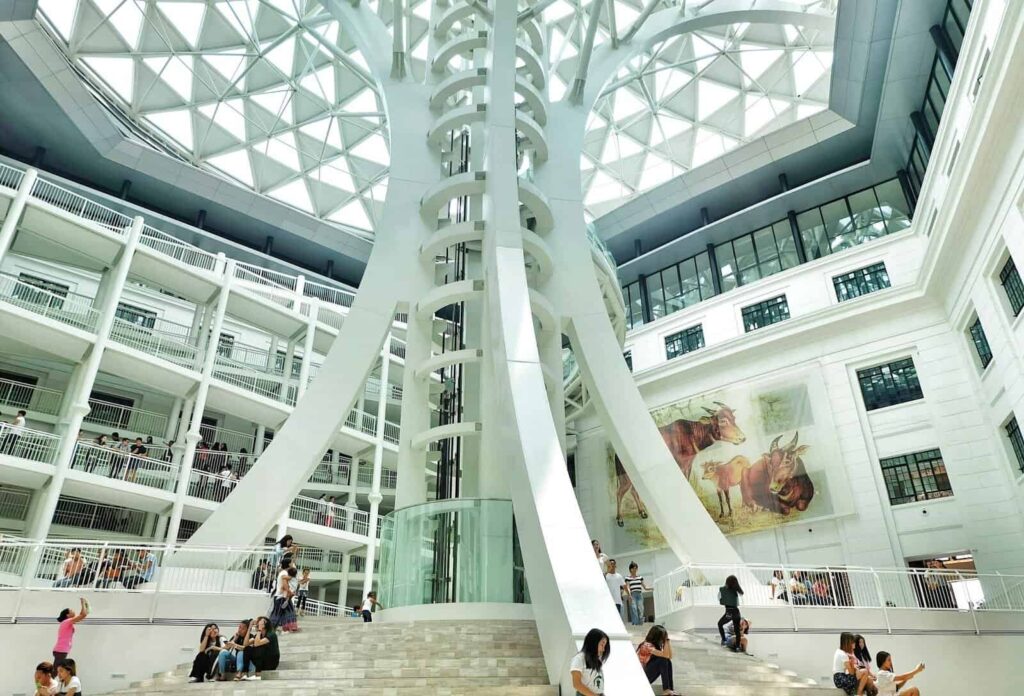
Address: Teodoro F. Valencia Cir, Ermita, Manila, 1000 Metro Manila
Website: https://www.nationalmuseum.gov.ph/
Contact Details: (02) 8298 1100
Operating Hours: Tuesday-Sunday: 9 AM–6 PM
Entry Fee: Free
The National Museum of Natural History is all about our country’s rich biodiversity and ecosystems. They’ve got hands-on stuff like drawing tables, so it’s not just educational; it’s also fun, especially for kids.
With 12 exhibitions, they’ve got everything from stuffed local animals to fascinating creatures like the Philippine Eagle and a life-sized Lolong, the gigantic Saltwater Crocodile.
Pro tip:
- Once you’ve finished at the museum, make the most of your time in Manila by exploring nearby attractions like Rizal Park, Manila Ocean Park, or savoring a tranquil sunset along Manila Bay.
3. National Museum of Anthropology
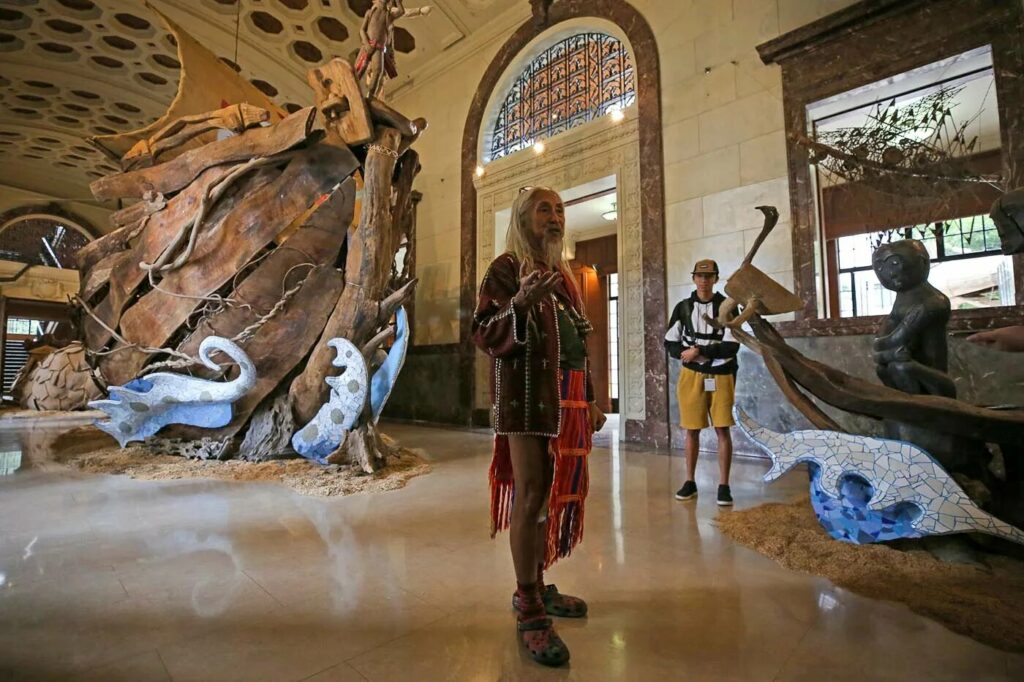
Address: HXPJ+3C6, P. Burgos Drive Rizal Park, Teodoro F. Valencia Cir, Ermita, Manila, 1000 Metro Manila
Website: https://www.nationalmuseum.gov.ph/
Contact Details: (02) 8298 1100
How to get there: Operating Hours: Tuesday-Sunday: 9 AM–6 PM
Entry Fee: Free
The National Museum of Anthropology is one awesome place for culture enthusiasts. It’s all about diving deep into Filipino life.
This isn’t your typical art museum – they’ve got around 10,000 unique pieces from all over the Philippines. But here’s the kicker: they even have the skullcap of Tabon Man, the earliest-known Filipino from a mind-boggling 24,000 BC!
Pro tip:
- While you’re free to take photographs, be sure to adhere to the rules regarding video recording and flash photography. Respecting these guidelines helps preserve the integrity of the museum’s ancient artifacts.
4. Ayala Museum
Address: Greenbelt Park, Makati Avenue, corner Dela Rosa Street, Ayala Center, Makati, Metro Manila
How to get there: https://www.ayalamuseum.org/home
How to get there: 0917 834 3845, [email protected]
How to get there: Wednesday-Sunday: 10 AM–6 PM
Entry Fee:
- Regular (All exhibitions) – Php 650
- Discounted* (All exhibitions) – Php 350
- Splendor exhibition only – Php 350
- Free Admission:
- Ayala Museum Members
- Local and foreign children three years old and below
- Legally blind persons
Nestled in Makati’s Ayala Complex, the Ayala Museum offers a fascinating journey through the Philippines’ history and culture. Its remarkable collections reveal pre-colonial treasures and the legacy of early trade.
The museum’s well-crafted dioramas breathe life into historical narratives, making it an engaging experience for visitors of all ages. Its indigenous textile collection, pre-Hispanic gold jewelry, and rotating art exhibits add to the cultural richness.
Pro tip:
- Consider joining a guided tour to gain deeper insights into the exhibits. If guided tours aren’t your preference, you can opt for available audio guides, which provide a self-guided tour with informative commentary.
5. The University of Sto. Tomas Museum of Arts and Sciences
Address: 3f Museum Director’s Office, España Blvd, Sampaloc, Manila, 1015 Metro Manila
Website: https://ustmuseum.ust.edu.ph/
Contact Details: +632 8781-1815, [email protected]
Operating Hours: Monday: 10 AM–4:30 PM, Tuesday-Friday: 8:30 AM–4:30 PM
Entry Fee:
- Non-Thomasian students (with ID) – Php 30
- Non-students – Php 50
- Free:
- Thomasian students
- Faculty
- Support staff
- Alumni (with ID)
- Senior citizens
- Persons with Disabilities (PWDs) (with valid IDs)
- Tour guides
- Teachers with school tour groups
- Members of the International Council of Museums (ICOM)
With roots dating back to the 17th century, The University of Sto. Tomas Museum of Arts and Sciences houses an impressive collection of Filipino art and lets you discover the nation’s creative evolution.
The museum also boasts natural history specimens, oriental art, religious relics, and an intriguing collection of coins and memorabilia. Plus, it keeps up with the times by featuring modern art exhibitions. It’s a dynamic hub in the country’s cultural landscape.
Pro tip:
- Don’t forget to visit the small library within the museum. It may offer further insights and references related to the collections.
6. Cebu Provincial Museum (Museo Sugbo)
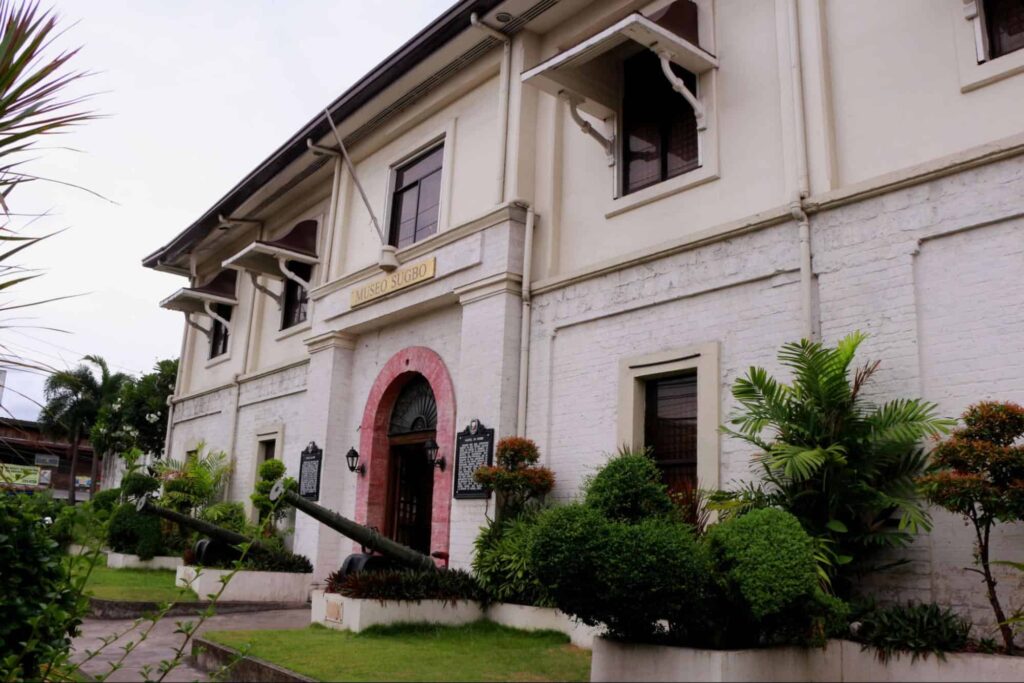
Address: 731 M. J. Cuenco Ave, Cebu City, 6000 Cebu
Social Media: https://www.facebook.com/museosugbo/
Contact Details: (032) 239 5626, [email protected]
Operating Hours: Monday-Friday: 10 AM–3 PM
Entry Fee:
- Local adult tourists – Php 30
- Foreign adult tourists – Php 75
- Local students – Php 10
- Foreign students – Php 50
- Senior citizens – Php 10
The Cebu Provincial Museum, once Cebu Jail and a Katipunero prison during the revolution, holds a unique place in Philippine history. Nestled in the Tejero area, it’s now a must-visit museum showcasing over a thousand years of historical treasures.
The museum features four permanent galleries, three special exhibition galleries, and one changing exhibition gallery. Notably, it documents the country’s political history, spanning from the early struggles for independence to the modern political landscape.
Pro tip:
- Don’t miss the Wishing Well, known as the Well of Wisdom, Love, and Good Fortune, near the National Museum Galleries. It’s a piece of history in itself and worth a visit.
7. Davao Museum of History and Ethnography
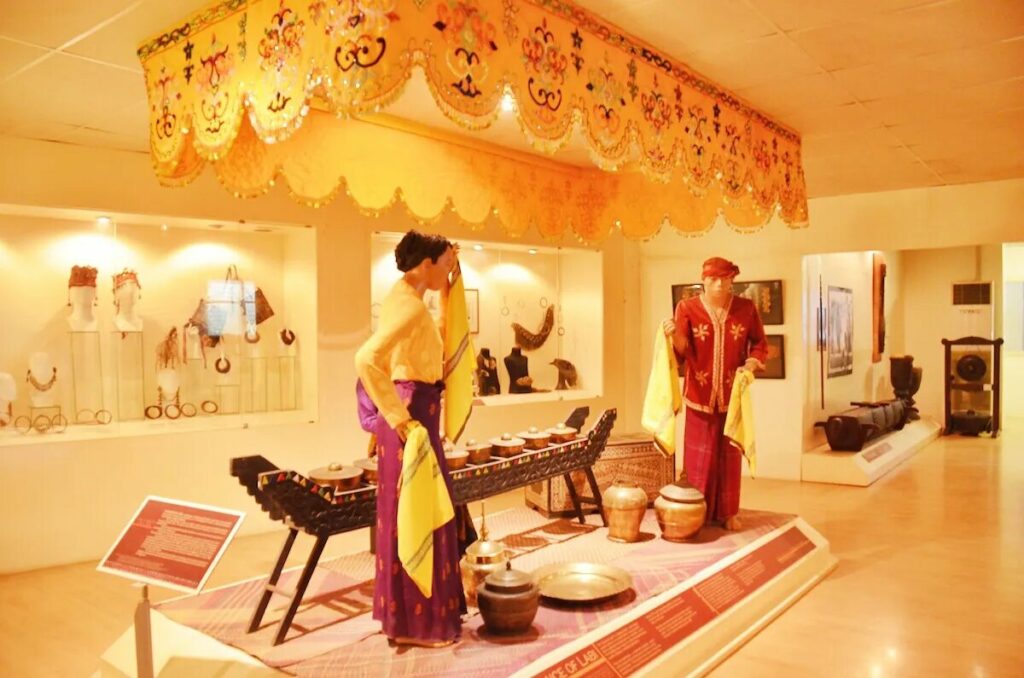
Address: Zonta Building, 113 Agusan Circle, Insular Village 1, Lanang, Davao City, Davao Del Sur
Contact Details: (082) 233 1734
Operating Hours: Monday-Saturday: 9 AM–5 PM
Entry Fee:
- Adults – Php 100
- Senior Citizens – Php 80
- Students – Php 20
The Davao Museum of History and Ethnography boasts a fascinating collection of artifacts, historical photos, and stories that trace the journey of the diverse tribes that have called this region home.
Beyond its exhibits, the Davao Museum serves as a cultural hub, hosting engaging events like photo exhibits, lectures, forums, and seminars.
Pro tip:
- Keep an eye on the museum’s schedule for lectures, forums, and seminars. These events can provide deeper insights into Davao’s culture and heritage.
8. Pinto Art Museum
Address: 1 Sierra Madre St, Grand Heights Subdivision, Antipolo, 1870 Rizal
Website: http://www.pintoart.org/museum
Contact Details: (02) 8697 1015, [email protected]
Operating Hours: Tuesday-Sunday: 10 AM–6 PM
Entry Fee:
- Adults – Php 250
- Students – Php 125
- Senior citizens and PWDs – Php 200
- Children ages three and below – Free
Pinto Art Museum is a vibrant hub for contemporary Philippine art. What sets this museum apart is its enchanting architecture. The white walls and Cycladic design, reminiscent of Greece’s Santorini, create a serene backdrop where art thrives.
It’s not just about the indoor galleries; the museum also boasts captivating outdoor art installations and an indigenous arts wing, where you can even experience a genuine Kalinga tattoo, offering an all-encompassing cultural immersion.
Pro tip:
- Shop for local handicrafts, art, and souvenirs from the markets in Antipolo. It’s an excellent opportunity to bring back unique mementos from your trip.
9. Aguinaldo Shrine and Museum
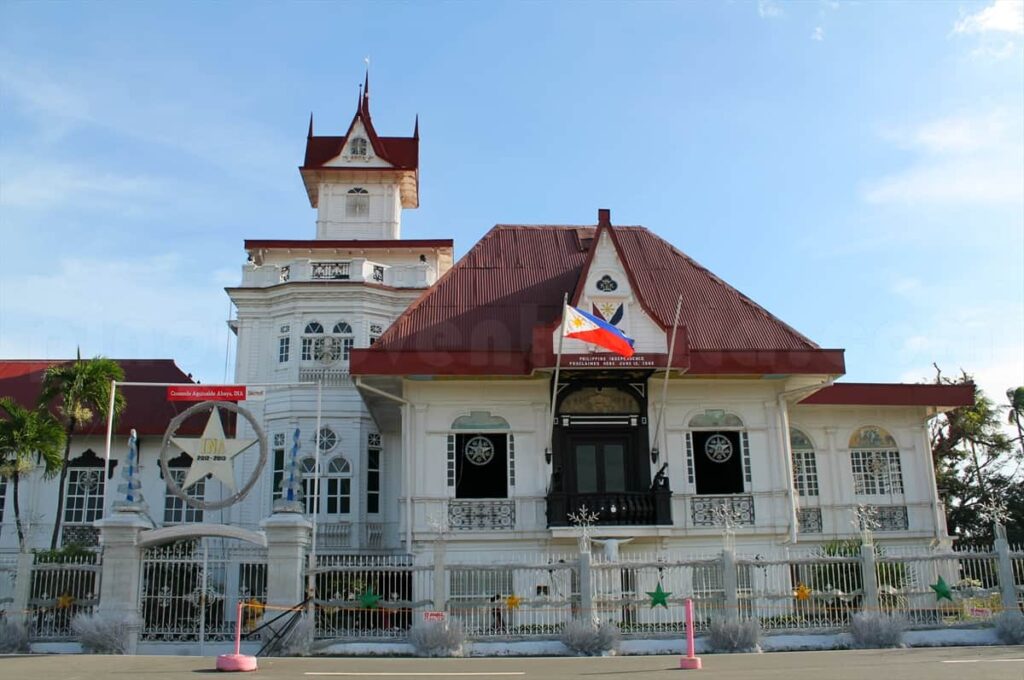
Address: CWW4+2QR, Kawit, 4104 Cavite
Contact Details: (046) 484 7643
Operating Hours: Monday-Sunday: 9 AM–4 PM
Entry Fee: Free
The Aguinaldo Shrine and Museum in Kawit, Cavite, is the birthplace of Emilio Aguinaldo, the country’s first president. This historic mansion was where the declaration of Philippine independence from Spanish rule took place on June 12, 1898.
The mansion itself is a remarkable structure, designed by Aguinaldo, featuring an impressive collection of antique furniture and decorations adorned with motifs of various national symbols.
Pro tip:
- Explore the surrounding area in Kawit; there are other historical sites nearby, such as the Kawit Church and the Binakayan Church.
10. Palawan Special Battalion WW2 Memorial Museum
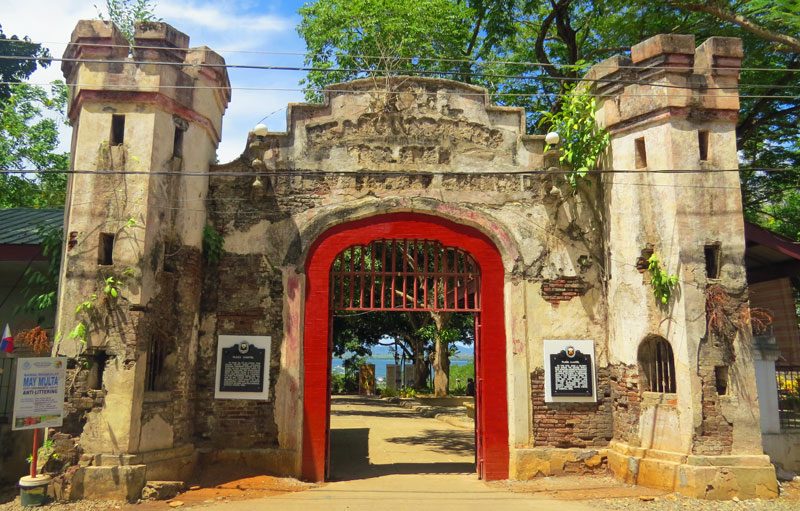
Address: Rizal Avenue, Barangay San Miguel, Puerto Princesa, Palawan
Contact Details: 0917 849 5343
Operating Hours: Monday-Sunday: 8 AM–5 PM
Entry Fee:
- Adult – Php 50
- Children below 10 years old – Free
The Palawan Special Battalion WW2 Memorial Museum provides a sobering yet enlightening experience, shedding light on the wartime struggles and the valor of local heroes.
Of particular note is the Willys MB Jeep, a vital asset for the American forces during the war. The museum also pays homage to the local heroes and guerrillas who bravely resisted Japanese occupation, commemorating their courage and sacrifices.
Pro tip:
- Take your time to read the informative plaques and descriptions that accompany the exhibits for a better understanding of the historical context.





